

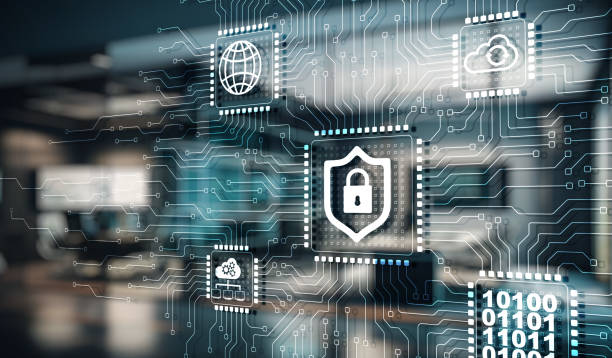
Did you know that over 30,000 websites are hacked daily? As unsettling as this statistic is, the true cybercrime figures might blow your mind. Cybersecurity isn't just a tech buzzword; it's an essential line of defense in today's digital-driven world.
With cyber threats growing in complexity, safeguarding your data and identity has never been more crucial. The digital age has propelled our dependence on technology—be it for work, communication, or entertainment—making cybersecurity a paramount concern for everyone.
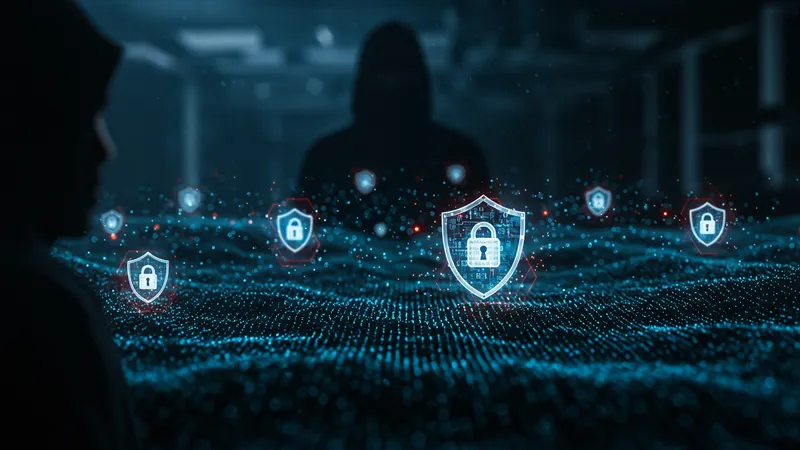
Consider this: A single cybersecurity breach can cost a business anywhere from thousands to millions of dollars. This means that, quite literally, failing to secure your digital assets can be financially devastating. It’s not just about money; it's about reputation and trust, once lost, rarely regained. But that’s not even the wildest part…
You might think your personal data is safe with multi-factor authentication and secure passwords, but hackers are always a step ahead. Cybercriminals now use sophisticated AI to crack security systems, making them more formidable than ever. Are you really protecting your data, or just postponing the inevitable? What happens next shocked even the experts…
The advent of powerful hacking tools has rendered ordinary passwords nearly obsolete. Despite numerous recommendations to use complex passwords and change them often, brute force attacks have advanced significantly. Cybercriminals now employ supercomputers to crack passwords in mere seconds, making this traditional security measure highly unreliable.
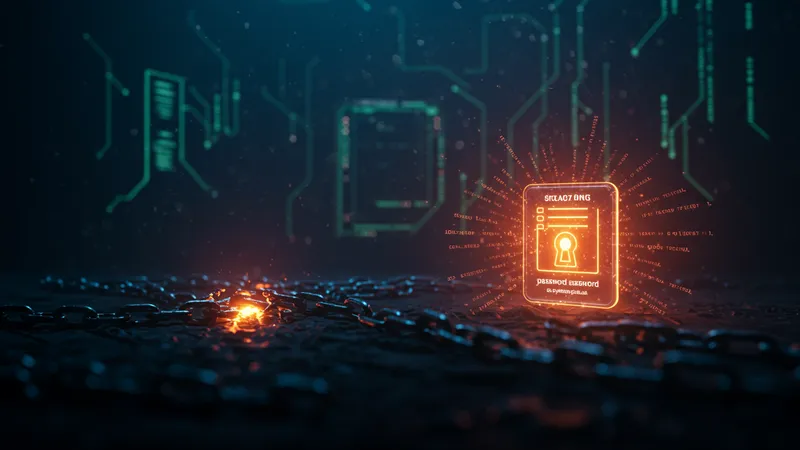
Furthermore, studies have shown that an overwhelming number of people reuse their passwords across multiple platforms, thereby increasing vulnerability. Password managers offer a more promising alternative by generating and storing complex, unique passwords for each site you visit. But there’s one more twist...
What's even more alarming is that despite these advancements, many individuals and businesses alike are complacent, believing their basic security measures are enough. Experts emphasize the importance of multi-layered security systems, indicating that cybersecurity is a nonstop game of chess. What you read next might change how you see this forever.
To truly defend your digital life, integrating biometric authentication like fingerprint scans and face recognition are seen as the cutting edge. Yet, even these methods are not foolproof, as hackers develop increasingly advanced methods for spoofing biometric systems. Just when you thought technology was on your side, it flips the script entirely.
When speaking of cybersecurity costs, most people only consider the upfront expenses of implementing defensive measures. However, the true cost of ignoring cybersecurity can be catastrophic. Companies losing valuable customer data may face lawsuits, fines, and even bankruptcy, emphasizing the immeasurable value of staying protected.

A massive cyberattack makes recovery enormously challenging, draining budgets due to the required response and recovery efforts. Additionally, a hit to reputation results in long-term revenue loss. Remarkably, small businesses are not exempt—they are prime targets because their security measures are often less robust.
Given the staggering financial stakes, companies are urged to proactively invest in comprehensive security solutions. According to cybersecurity experts, incorporating training and awareness programs reduces the risk of breaches by up to 70%. But there’s another surprising side to this challenge...
The fear of cyberattacks is not merely speculative. In fact, some sectors like healthcare and finance face attacks daily. These sectors not only risk financial damage but also put lives at stake by compromising sensitive medical and financial data. And that's just scratching the surface of this multifaceted issue.
Social media has become a treasure trove for hackers, serving as a gateway to personal and corporate information. By simply analyzing profiles, hackers can gather enough data to launch sophisticated phishing attacks, often mimicking real identities to deceive victims.

Furthermore, a trend known as social engineering is on the rise, whereby cybercriminals manipulate individuals into divulging personal information. This can be devastating at a corporate level, as even a single negligent employee can compromise an organization’s security infrastructure.
Surprisingly, even tech giants have been victims of these cunning tactics. Enterprises are urged to train employees at all levels to identify red flags and to report suspicious activities. Could a simple user training program be the silver bullet?
The landscape is continually evolving. New platforms emerge, offering both increased connection and greater risks. As these platforms grow, so do the creative strategies of cybercriminals. The endgame isn't just about protecting data but adapting to an ever-shifting digital environment.
The Internet of Things (IoT) has made our lives more convenient, yet it has also transformed into a potential security nightmare. Many IoT devices lack robust security measures, creating a conduit for attackers to exploit and cause unprecedented damage.

In recent instances, compromised IoT devices have been used in large-scale Distributed Denial of Service (DDoS) attacks, crippling major websites globally. Despite these events, consumer awareness remains worryingly low, with many users failing to update devices or change default passwords.
Manufacturers are under increasing pressure to fortify their devices against these vulnerabilities. Industry leaders highlight that comprehensive security requires collaboration among manufacturers, developers, and users to adequately secure these devices. The problem is deeper than it appears...
As IoT usage escalates, so too does the urgency for stringent guidelines and industry standards. Failure to secure these devices can lead to complete network compromise. Are smart appliances set to become unexpected perpetrators of cybercrime?
While we often focus on external threats, the danger within should never be underestimated. Insider attacks, whether malicious or unintentional, account for a significant percentage of data breaches, making it imperative for organizations to implement stringent oversight policies.
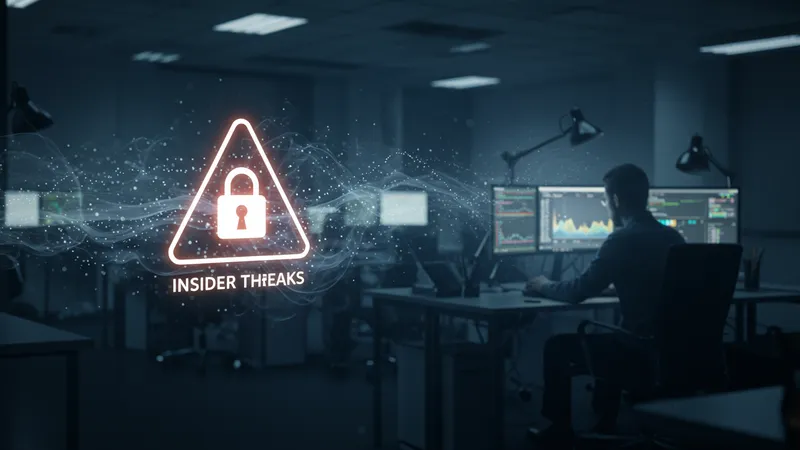
Shockingly, many organizations lack sufficient systems to detect insider threats, leading to prolonged unauthorized access of sensitive information. Experts suggest integrating behavioral analytic tools to identify unusual activities that could signify an insider threat.
Implementing smart surveillance systems can also provide critical insights. Recognizing these signals could mean the difference between an isolated incident and a devastating breach. Still, is it enough to align technology with human behavior?
The human element is both a vulnerability and a shield. Training, ethical management, and a culture of vigilance could potentially reduce these threats significantly. One must ponder: can technology bridge the gap in this age-old battle between trust and security?
Ransomware attacks have surged dramatically, leaving a trail of devastation in their wake. These attacks encrypt victim data, demanding payment for release, and can affect anyone from individuals to multinational corporations.
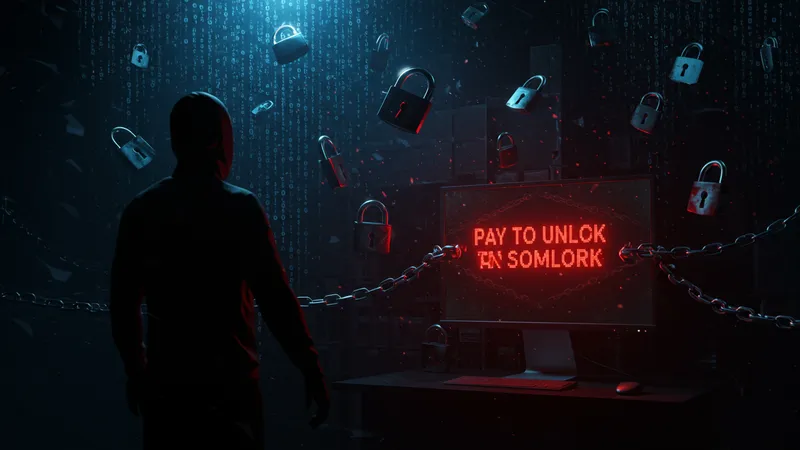
The speed and stealth of these attacks have blindsided many, often exploiting outdated systems or untrained personnel. New variants of ransomware can evade traditional defenses, showcasing how relentless cybercriminals have become.
Experts advise the regular backing up of data and the implementation of comprehensive disaster recovery plans. However, the growing complexity of attacks necessitates a broader strategic approach. Could these new tactics redefine the digital safety playbook?
Considering the severe implications and staggering costs of a ransomware incident, businesses and individuals must stay ahead with dynamic security measures. Reactive strategies are obsolete; adaptive, predictive measures are now a necessity. The next steps could make or break one's digital resilience.
Governments worldwide are ramping up efforts to safeguard digital infrastructures. Yet, cybersecurity policies vary significantly, causing disparity in global defense mechanisms. International collaboration is needed to create comprehensive frameworks for cybersecurity.
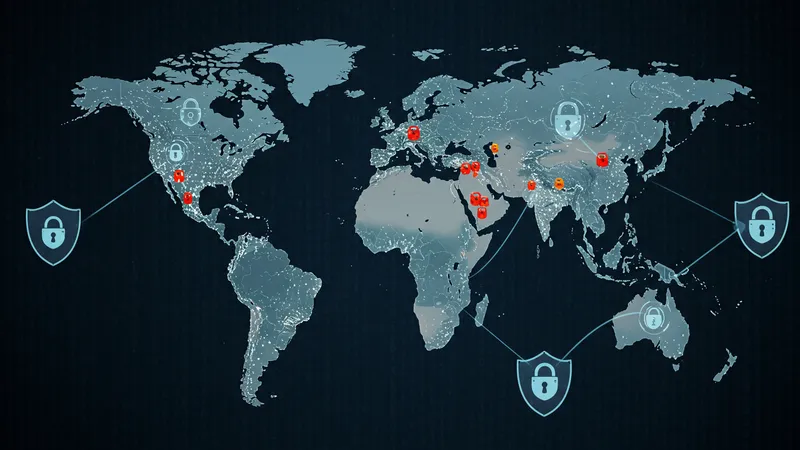
In numerous countries, regulatory measures require organizations to follow stringent cybersecurity protocols. However, inconsistencies exist, leading to gaps exploitable by cybercriminals. Experts advocate for unified standards as a step toward holistic digital security.
Despite these efforts, a reactive stance remains prevalent, with policies often evolving only after significant breaches. Nations must prioritize proactive, rather than reactive, strategies. Only then can they effectively protect their citizens and digital borders.
The question remains: Can global cooperation succeed against the common enemy of cybercrime? Forging multinational partnerships is essential to combat this pervasive issue. The race is on to outpace the continually evolving cybersecurity threat landscape.
Artificial Intelligence (AI) is rapidly becoming a double-edged sword in cybersecurity. On one hand, AI systems enhance threat detection with unparalleled efficiency, while on the other, they're being weaponized by hackers to execute more sophisticated attacks.

Organizations are increasingly relying on AI to bolster their security protocols, employing machine learning to identify patterns and predict attacks before they happen. However, the very same technology allows adversaries to elude traditional security measures.
AI's capacity for self-learning raises questions about its future roles and implications in cybersecurity. Can these advanced systems eventually override human control and judgment? The debate continues as innovation blurs the lines between defense and disruption.
As the technology landscape evolves, so too must cybersecurity strategies. The real challenge lies in maximizing AI's protective capabilities while minimizing its potential as a tool for cybercrime. Are the benefits worth the uncharted risks that lie ahead?
The widespread adoption of cloud computing has brought immense benefits, yet it also raises serious security concerns. While cloud providers promise robust security, breaches have shown that relying solely on their defenses can be perilous.

Data stored on the cloud is often more vulnerable than anticipated. The shared infrastructure model can lead to unforeseen vulnerabilities, exploited by cyberattackers who can access significant amounts of data through a single breach.
It is crucial for users to engage in shared responsibility—a combination of providers' built-in security measures with users' proactive safeguards. Ironclad security requires encryption, diligent access controls, and regular security audits.
Nevertheless, confidence in cloud services is shaken by frequent high-profile breaches. Users must question if convenience outweighs security risks, as both individuals and businesses seek to strike a balance between accessibility and protection.
Cyber surveillance, intended to protect, has sparked intense ethical debates. While some argue it’s essential for national security, others claim it infringes on personal privacy, igniting calls for regulatory scrutiny.
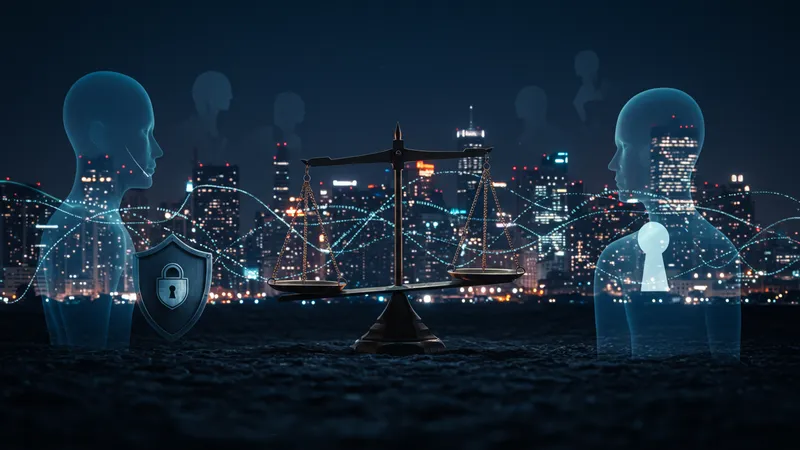
Mass surveillance initiatives, though claimed crucial for preempting cyber threats, are often criticized for overreach. Transparency and accountability become paramount in ensuring these practices don't violate fundamental human rights.
The evolving dialogue implies an urgent need for balance—ensuring national security without compromising individual freedoms. Amidst growing public concern, governments must redefine acceptable surveillance levels to build trust.
From the dark web to public forums, the contentious interplay between surveillance and privacy sparks ongoing global conversations. Is there a feasible solution that satisfies both security needs and privacy rights?
Quantum computing promises revolutionary advancements, yet its potential to disrupt current encryption standards threatens global cybersecurity. This emerging technology can render conventional security practices obsolete overnight.

The looming quantum era necessitates urgent development of quantum-resistant algorithms. Current encryption's vulnerability to quantum decryption implies we are on the brink of a security paradigm shift.
Experts stress the importance of preemptive research and investment in quantum-safe cryptography. The impending wave of quantum technology demands rapid adaptation to stay ahead in cybersecurity.
The clock ticks as organizations rush to future-proof their systems. Are we prepared for the sweeping changes quantum computing will bring, or will we find ourselves in the throes of an unprecedented security crisis?
As cyber threats evolve, cybersecurity training emerges as a critical line of defense. Proper training not only fortifies human resources but can effectively bridge the technological gaps often exploited by hackers.

Businesses acknowledging this training imperative invest in multi-level education programs, continually assessing and updating protocols to keep pace with emerging threats. Simulated breach scenarios also provide valuable insights and readiness.
Training's impact exceeds expectation as a substantial drop in successful attacks directly correlates with educated employees. Despite advancements, ongoing commitment is essential to maintain vigilance and preparedness.
Ultimately, the human factor presents both risk and opportunity. Organizations must decide whether to empower their workforce as proactive defenders or risk remaining vulnerable. Can training be the definitive solution to the cybersecurity conundrum?
As technology evolves, so does its counterpart: cybersecurity. The future promises advancements in AI, blockchain, and quantum cryptography, pushing the boundaries of what's possible in digital protection.
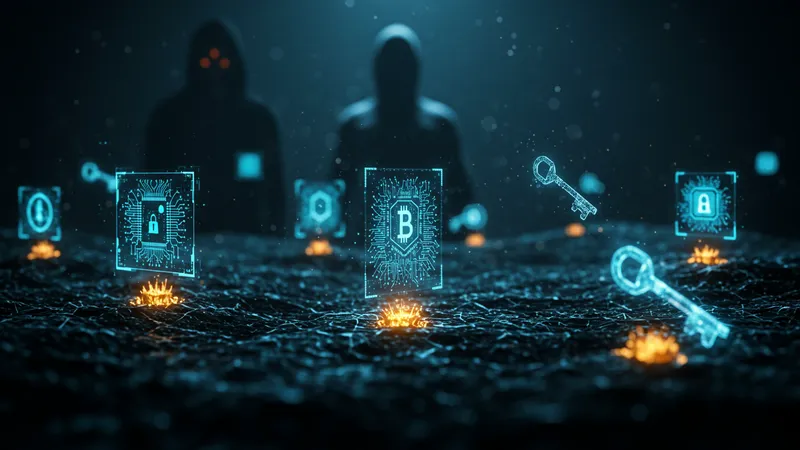
Innovation leads the way with these cutting-edge solutions, yet they bring unprecedented challenges. Will technological advancements outpace our ability to secure them, as hackers continually innovate? A paradox emerges, prompting need for foresight.
Collaborative effort among technologists, businesses, and governments is vital to navigate this future landscape. Building resilient infrastructures demands collective intelligence and shared responsibility.
The horizon teems with both promise and peril. Can society keep pace with this rapid advancement to ensure a secure digital future, or will cybersecurity forever remain a reactionary discipline? A defining era awaits.
The cybersecurity realm is fraught with complexity and urgency. As we've unraveled its many layers, the take-home lesson is clear: remaining adaptable and vigilant is the ultimate strategy in combating cyber threats. Share this article or bookmark it to stay ahead of the game and ensure you’re well-prepared for what lies ahead.